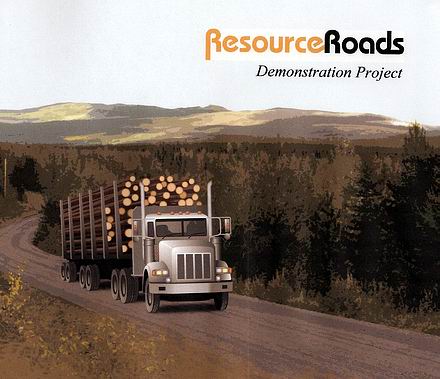Resource Roads Demonstration Project Wraps With Recommendations
By 250 News

Prince George, B.C., — Recommendations based on the findings of the Resource Roads Demonstration Project are being released. Focused on improving worker safety on resource roads, the Project was conducted in the Prince George forestry region and the oil and gas fields southeast of Fort St. John.
B.C. has more than 600,000 kilometres of resource roads, commonly known as “logging roads,” “forest service roads,” “petroleum development roads,” or “industrial roads” that are used to access remote parts of the province. While built primarily to support industry, the public frequently uses these roads for recreational purposes.
The Project focused on the organization and implementation of a management structure to provide a system of coordination and a process of safety compliance for users of the defined road systems.
Over a 10-year period (1999 to 2009), motor vehicle incidents have claimed 68 lives in the Forestry and Oil/Gas industries; 53 percent of those fatalities were on resource roads. The most common types of vehicles involved in resource road fatalities are log trucks (47 percent) and pickup trucks/crummy vans (41 percent). The most frequent type of collisions was rollovers, accounting for nearly 64 percent of fatalities.
“WorkSafeBC and its partners believe fewer workers will be killed or seriously injured on resource roads as a result of this project,” said Betty Pirs, WorkSafeBC’s Executive Director of Prevention. “We are committed to working with our government and industry partners to implement the recommendations across the province.”
Recommendations made to WorkSafeBC, the Ministry of Forests and Range, the BC Forest Safety Council, Enform, and employers who require workers to travel on resource roads focus on:
- Road Safety Management Committees being established throughout the province as the administrative structure for safety on resource roads
- WorkSafeBC taking a leadership role to ensure any system put in place for road administration is compliant with the Workers Compensation Act
- New technology being reviewed and used appropriately by all road users
- Electronic stability control becoming a standard on light duty trucks and other vehicles when feasible
- Driver training standards being identified, implemented, and enforced
- Subcommittees or Road User Groups (RUGs) be put in place at an operational level where work is occurring within each unique road system or road network
The project concluded that a critical success factor was the participation of the road owner (i.e., Ministry of Forest and Range, the Oil and Gas Commission, or others) in any road safety management initiative.
“In the next few years, there will be a huge increase in the number of trucks using the road system in the Northeast,” said Duane Mather, President and CEO of Nabors Canada, in support of more coordination of activity on resource roads. “We need this project at this time to ensure that the workers who will help us make the Horn River and Montney plays succeed will be safe.”
Both of the regions where the Demonstration Project was piloted were provincial forest districts, and the employers who became part of the Road Safety Management Committees represented the two affected industries — forestry and oil and gas.
Previous Story - Next Story
Return to Home









